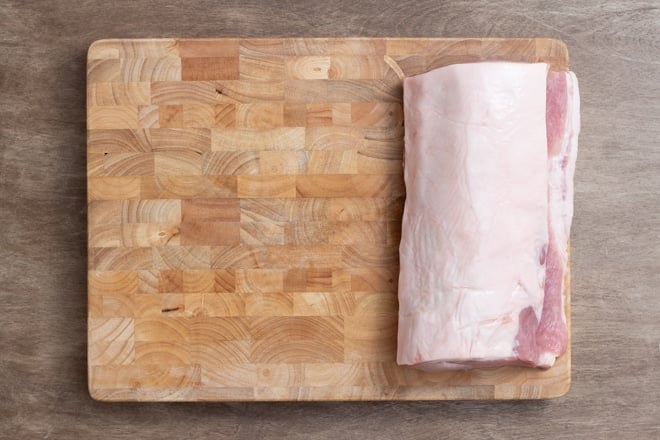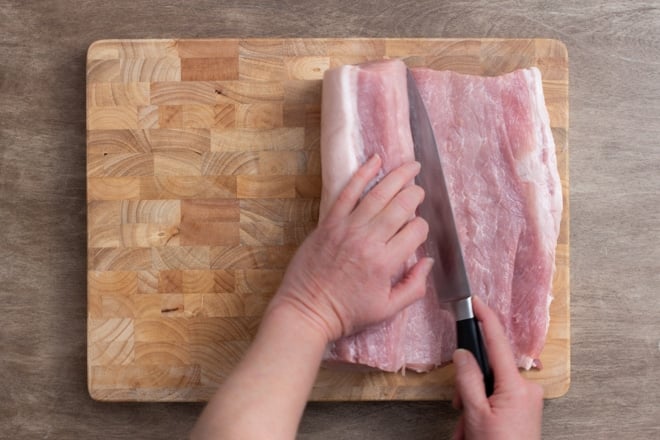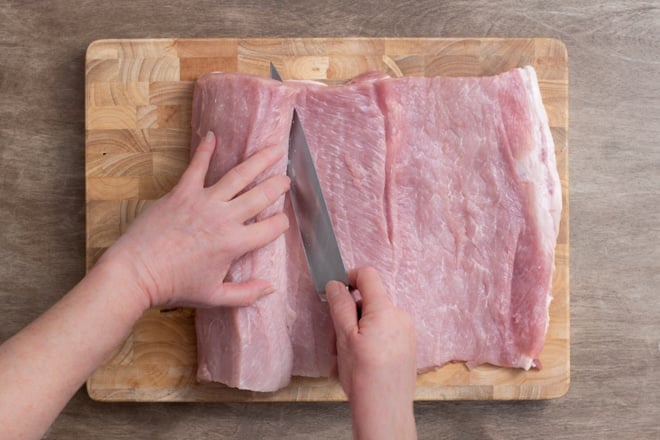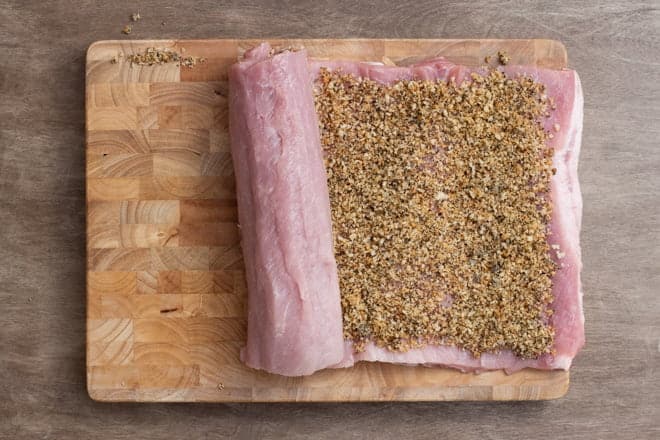In the realm of culinary artistry, stuffing meat stands as a technique that elevates ordinary cuts to extraordinary heights. Whether it’s a succulent pork loin or an affordable flank steak, the addition of flavorful fillings transforms these meats into showstopping centerpieces. This comprehensive guide delves into the intricacies of stuffing meat, providing step-by-step instructions, delectable stuffing ideas, and tips for achieving the perfect balance of flavors.
The Benefits of Stuffing Meat
Beyond its aesthetic appeal, stuffing meat offers a myriad of culinary advantages:
- Enhanced Flavor: Stuffing infuses meat with an array of flavors, creating a symphony of tastes in every bite.
- Increased Tenderness: The moisture from the stuffing helps tenderize the meat, resulting in a melt-in-your-mouth texture.
- Versatility: Stuffing opens up a world of possibilities, allowing you to customize your dish with your favorite ingredients and flavor combinations.
- Impressive Presentation: Stuffed meats make a visually stunning addition to any dinner table, adding a touch of elegance to your culinary creations.
How to Stuff Meat: A Step-by-Step Guide
1. Choose the Right Cut of Meat:
Select a cut of meat that is suitable for stuffing, such as pork loin, flank steak, or chicken breasts.
2. Prepare the Meat:
Remove any excess fat or connective tissue from the meat. For thicker cuts, such as pork loin, you may need to butterfly the meat to create a pocket for the stuffing.
3. Make the Stuffing:
Prepare your desired stuffing according to the recipe. Common ingredients include bread crumbs, vegetables, herbs, spices, and cheese.
4. Stuff the Meat:
Spread the stuffing evenly over the prepared meat. Roll or fold the meat to enclose the stuffing, securing it with kitchen twine or toothpicks.
5. Cook the Meat:
The cooking method will depend on the type of meat and the stuffing. You can roast, grill, or pan-sear the stuffed meat until it reaches the desired internal temperature.
6. Rest and Slice:
Allow the stuffed meat to rest for a few minutes before slicing and serving. This helps the juices redistribute, resulting in a more succulent dish.
Stuffing Ideas for Every Occasion
The possibilities for stuffing are endless, but here are a few classic and innovative ideas to get you started:
- Pork Loin: Stuff with a mixture of bread crumbs, Parmesan cheese, herbs, and dried fruit.
- Flank Steak: Fill with a layer of prosciutto, spinach, and Parmesan cheese.
- Chicken Breasts: Stuff with a combination of bread crumbs, herbs, and sautéed mushrooms.
- Lamb Chops: Enhance with a stuffing of feta cheese, olives, and sun-dried tomatoes.
- Turkey Breast: Create a festive stuffing with cranberries, apples, and walnuts.
Tips for Perfect Stuffed Meat
- Use a sharp knife: A sharp knife ensures clean cuts and prevents tearing the meat.
- Don’t overstuff: Overstuffing can make the meat tough and dry.
- Secure the stuffing: Use kitchen twine or toothpicks to keep the stuffing in place during cooking.
- Cook to the right temperature: Use a meat thermometer to ensure the meat reaches the desired internal temperature for safety and optimal flavor.
- Let it rest: Allowing the stuffed meat to rest before slicing helps the juices redistribute, resulting in a more tender and flavorful dish.
Mastering the art of stuffing meat empowers you to create culinary masterpieces that will impress your family and guests alike. With the right techniques and a touch of creativity, you can transform ordinary cuts of meat into extraordinary dishes that tantalize the taste buds and leave a lasting impression. So, gather your ingredients, sharpen your knife, and embark on a culinary adventure that will elevate your cooking skills to new heights.
Video: How To Spiral Stuff A Pork Loin
There are several methods for stuffing a pork loin. The easiest method is to cut the meat cylinder lengthwise so that it opens up like a book, then stuff it and seal it shut. This process, sometimes known as butterflying, results in meat slices that resemble this.
Making a hole in the middle of the loin, forming a sort of tube, and stuffing the tube with meat is another method. It results in slices with the stuffing in the middle of a meat chunk shaped like a doughnut.
But the spiral-cut is my favorite because the slices have the most stunning, lovely spirals of meat and filling. Surprisingly, despite being entirely different from the first choice, this is also occasionally referred to as butterflying. Because the finished roast resembles a jelly roll, it is also occasionally referred to as a roll cut. Either way, it’s not that difficult to do, and even if you make a mistake, most of the “mistakes” will vanish magically after the meat is cooked, sliced, and rolled back up!
Here’s how you do it.
How To Make Stuffed Pork Loin:

Start with the loin on a large cutting board. (If you’re not sure what makes a pork tenderloin different from a pork loin, check out this post.) ) With the meat positioned perpendicular to you, cut along one side of the cylinder about 1/2 inch from the edge, stopping about 1/2 inch short of the cutting board. The meat flap that runs the length of the cylinder and ends up on the same side as your cutting hand—or, if you’re right-handed, your right—will be 1/2 inch.

Change your knife so it’s parallel to the cutting board. Cut into the meat (away from the flap) beginning where the flap meets the cylinder, maintaining your knife 1/2 inch above the cutting board.

With your other hand, continue cutting the meat, pulling it away from the knife as if you were unrolling a carpet. Eventually, you should have one sizable, 1/2-inch-thick piece of meat. Ta-da!.
If the meat feels too thick in any areas, cut a shallow slit there and press the meat open (the photo above shows where I made a slit similar to this one towards the right).
Don’t worry too much if the meat appears a little rough or has holes in it. Once the roast is on the dinner table, most of those flaws will be hidden.

Top this rectangle with your stuffing, made with your own recipe or the one I’ve provided below. About a 1/4-inch thickness is ideal.

Reroll the meat, beginning at the inside, into a cylinder and secure with kitchen twine.

You’re ready to roast.
Additionally, as I previously mentioned, the slices of your spiral-cut roast taste as good as they look when they arrive at the table. Because the stuffing enhances the roast’s flavor throughout!
Having said that, you can always roast the pork loin without stuffing it if all of that seems like too much work or if you were going to stuff it but your day got away from you and you don’t have enough time. I believe you will enjoy this technique for roasting pork loin in the oven almost as much as I do. It’s my best method. Either way, Enjoy!.
Stuffed Steak Rolls
FAQ
What cut of meat is best for braciole?
Does stuffing have meat in it?
How to stuff a flank steak?
How do you cook stuffed peppers with raw meat?
Add the bell peppers to a lightly oiled baking dish. Top the peppers with marinara sauce and bake in a preheated oven. Right before serving, sprinkle some cheese on top and broil the stuffed peppers for a few minutes. Lastly, garnish with parsley and serve. How long do you cook Stuffed Peppers with raw meat?
How do you make beef tender?
Tenderize the beef: In a medium bowl, add the beef, 1 teaspoon of the salt, and the baking soda. Use your hands to mix until evenly combined, and let the mixture sit for 20 minutes while you continue with the recipe. As it rests, the baking soda raises the pH of the meat, helping to lock in moisture and making the beef tender.
Can You bake meat stuffing?
Parsley, mashed potatoes, breadcrumbs, the veggies, and the meats ready to be all mixed together and baked. After mixing everything, you can hold this stuffing in the fridge a few days, then bake it when it’s time to eat. I didn’t think that baking it would change the flavor of the meat stuffing much, but it actually does!
Should I precook raw meat in my stuffing?
According to the USDA, it is important to precook any raw meat, poultry, or shellfish that will go into your stuffing to reduce the risk of foodborne illness from bacteria that may be found in raw ingredients.
